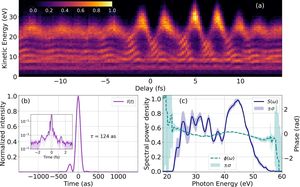DeepSeek, the Chinese AI startup, has rapidly transformed the technological and financial dynamics of the artificial intelligence industry, igniting both excitement and concern. Launched in 2023 and founded by Liang Wenfeng, the company is now competing head-to-head with established U.S. tech giants such as OpenAI, Google, and Anthropic, but at significantly lower financial investments and efficiency costs.
Wenfeng grew up modestly, studying electrical engineering and eventually managing High-Flyer, a quantitative hedge fund. Following the hedge fund's struggles, he pivoted to AI, applying his experience and resources to launch DeepSeek. Despite having only 150 employees, the firm has made headlines with its advanced AI models and research breakthroughs.
During the last month of January 2025, the tech world has been rocked by DeepSeek's recent launches, including its highly competitive V3 model, which performs comparably to giants' offerings but with drastically fewer resources. Reports have emerged highlighting their ability to train state-of-the-art AI technology at one-twentieth of the cost typically required by competitors. Industry watchers have drawn parallels between this moment and America's space race, with Marc Andreessen dubbing the rise of DeepSeek as "AI’s Sputnik moment,” indicating its significance as precedent-setting.
The emergence of DeepSeek occurs alongside the announcement of President Donald Trump’s substantial $500 billion private-sector AI investment package known as the Stargate project, which aims to create extensive data centers across Texas. Following the launch, Trump stressed, “This is money normally meant for China,” underscoring the intensified focus on the rivalry between U.S. and Chinese technological advancements.
Liang's approach contrasts sharply with the immense funding commitments being made by U.S. firms, who are investing hundreds of billions to maintain their competitive edge. For example, spending projections include $80 billion from Microsoft and $500 billion tied to the Stargate initiative supported by major leaders, including Sam Altman of OpenAI. This stark divergence highlights how DeepSeek’s innovative model—focused on finding efficiencies within existing frameworks rather than overwhelming resource investment—has forced scrutiny on conventional approaches within the tech sector.
Wenfeng rightly points out, “More investment does not necessarily lead to more innovation,” demonstrating his vision of the contrasts between the tech ideologies of China and the United States. While U.S. corporations pursue expansive capital expenditure to create advanced infrastructures, DeepSeek’s local talents are optimizing limited resources to achieve similar outcomes, marking fundamental shifts within the AI development paradigm.
This transition is not without its challenges. The company continues to grapple with censorship restrictions common within China, which impact the nature of queries it can handle. Reports have surfaced showing the app's automated system deflecting sensitive subjects like recent historical events and government leaders. Nevertheless, the buzz around DeepSeek’s recent mobile app launch has propelled it to the top of U.S. download charts, indicating its widespread acceptance among eager consumers.
The simultaneous rise of DeepSeek has fueled discussions among investors and tech executives, all eager to analyze the situation's broader economic ramifications. Nvidia's substantial market decline this past week—suffering losses exceeding $600 billion—reflects potential investor fears about the changing dynamics within the industry driven by DeepSeek’s disruptive practices.
Elon Musk and other executives have noted potential ripple effects on the value of AI-centric investments as DeepSeek showcases the profitability of lower powered solutions. The firm’s methodology prompts industry leaders to reconsider their strategies and operational architectures as they map out future AI landscapes.
The broader geopolitical ramifications of DeepSeek's ascendance extend beyond immediate market impacts, touching upon U.S. foreign policy dynamics and national security discussions. U.S. regulators are reassessing existing export controls on semiconductors, sparked chiefly by the perception of stagnation within American AI frameworks even as DeepSeek flourishes.
While the future of AI innovation appears to hang precariously between these competing paradigms, Liang and DeepSeek are poised to remain at the center of this discourse. Their method of tackling limitations and embracing openness generates anticipatory excitement for researchers and consumers globally. This moment feels like the convergence of mission-driven AI alongside economic pragmatism, leading many to question existing assumptions about technology growth.
DeepSeek's story is not simply about competition; it is about how methodologies and operational philosophies guide the direction of AI development. Whether resource optimization or significant capital investment proves to generate superior outcomes remains to be seen. But one fact is clear: as the narrative evolves, DeepSeek has driven the technology conversation onto ground-breaking new terrain.



